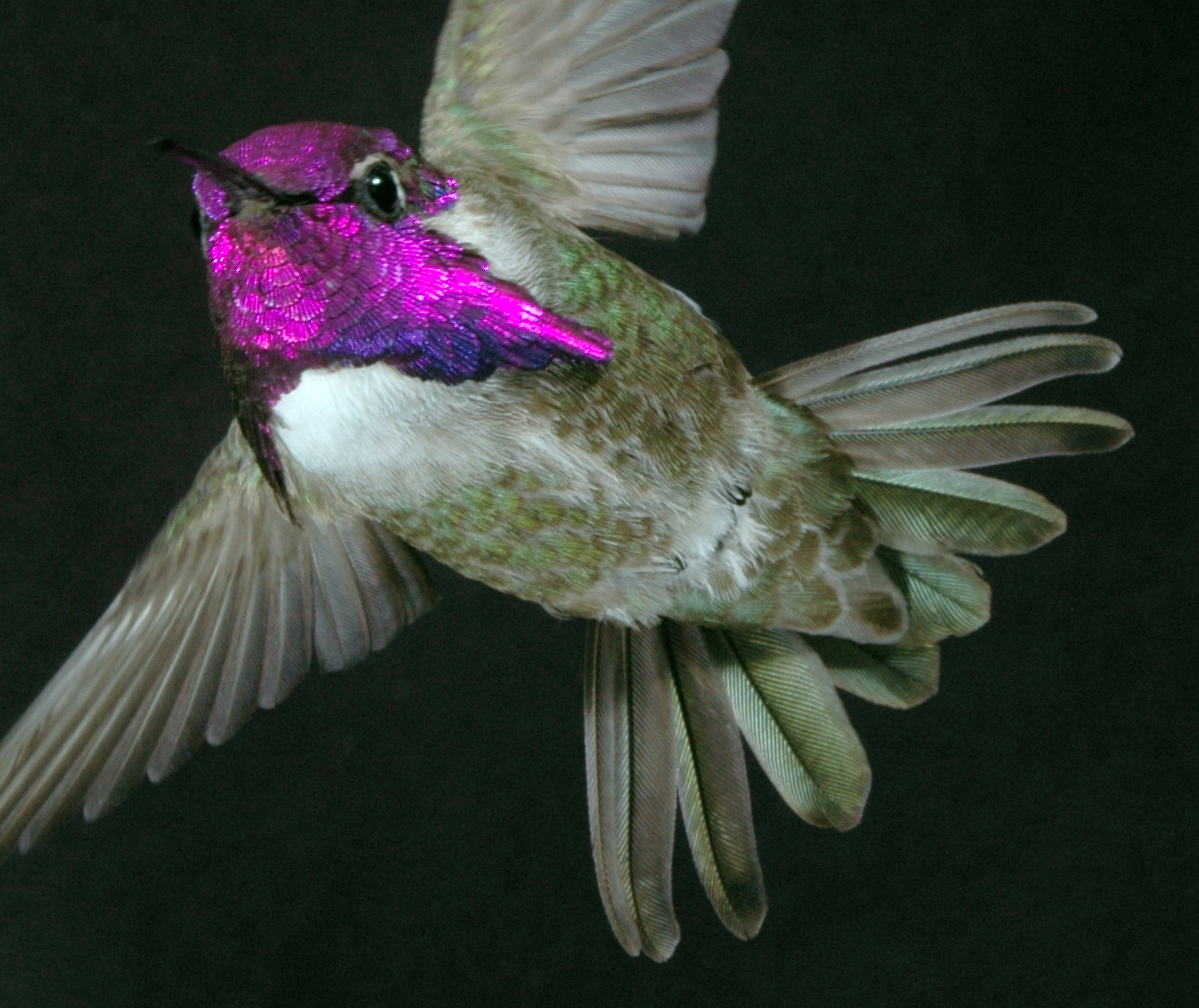
These hummingbirds make songs with their tail feathers to flirt
Researchers have learned of a creative mating ritual that is unique to Costa’s hummingbirds. According to the study, male Costa’s perform a strategic dive during which they “sing” to females using their tail feathers.
While other hummingbird species plunge in front of potential mates, Costa’s perform their dives to the side of females. Scientists at the University of California, Riverside (UCR) have found that this trajectory minimizes an audible Doppler sound that is generated by the dive.
The researchers believe that the males are manipulating the way females perceive their performances by minimizing the Doppler sound. Without this noise, females cannot acoustically detect the speed of the movements.
Study lead author Christopher Clark is an assistant professor of Biology in UCR’s College of Natural and Agricultural Sciences.
“Recent studies in birds and other animals suggest that females prefer higher speeds during male athletic displays,” explained Professor Clark. “By concealing their speed, males are not necessarily cheating, but instead have evolved this placement of trajectory out of female choice.”
Along with co-author Emily Mistick, Professor Clark determined that males direct their sound toward potential mates by twisting their tail vertically by up to 90 degrees. Previously, Professor Clark had demonstrated that the tail song is made by the rapid flapping of the outer tail feathers.
“We don’t know why males twist only half of their tails toward the females, but it may be due to anatomical limitations that prevent them from twisting their whole tail around,” he explained.
The researchers used an acoustic camera to document Costa’s dives. In addition, they conducted experiments in a wind tunnel to investigate how the speed and direction of the birds may alter the sounds that they produce.
This is when they discovered that it was difficult to measure the velocity of the Costa’s plunge in relation to the correlating sound.
“Once I realized it wasn’t trivial for a scientist to measure, I realized it wouldn’t be trivial for a female to measure either,” said Clark. He explained that the findings add to a growing collection of studies which demonstrate how male animals use athletic displays to draw potential mates.
“Most research has focused on static male attributes, such as bright colors or elongated tails, but our research shows that dynamic displays may be just as important, and males strategically control these performances to show themselves in the best possible light,” said Clark.
The study is published in the journal Current Biology.
—
By Chrissy Sexton, Earth.com Staff Writer
Image Credit: Christopher Clark, UC Riverside













